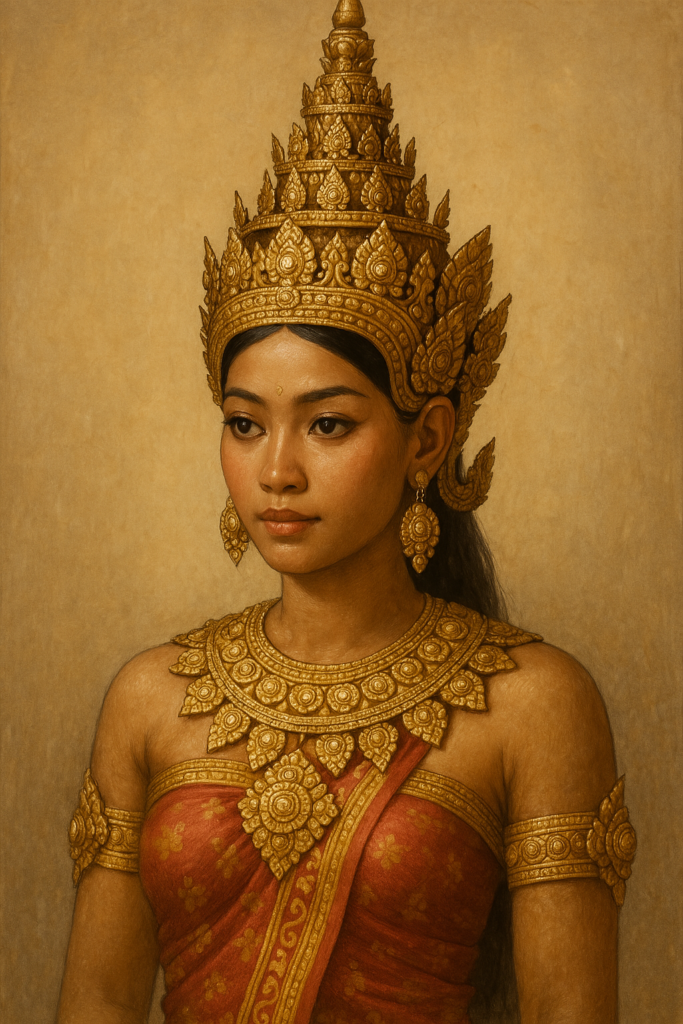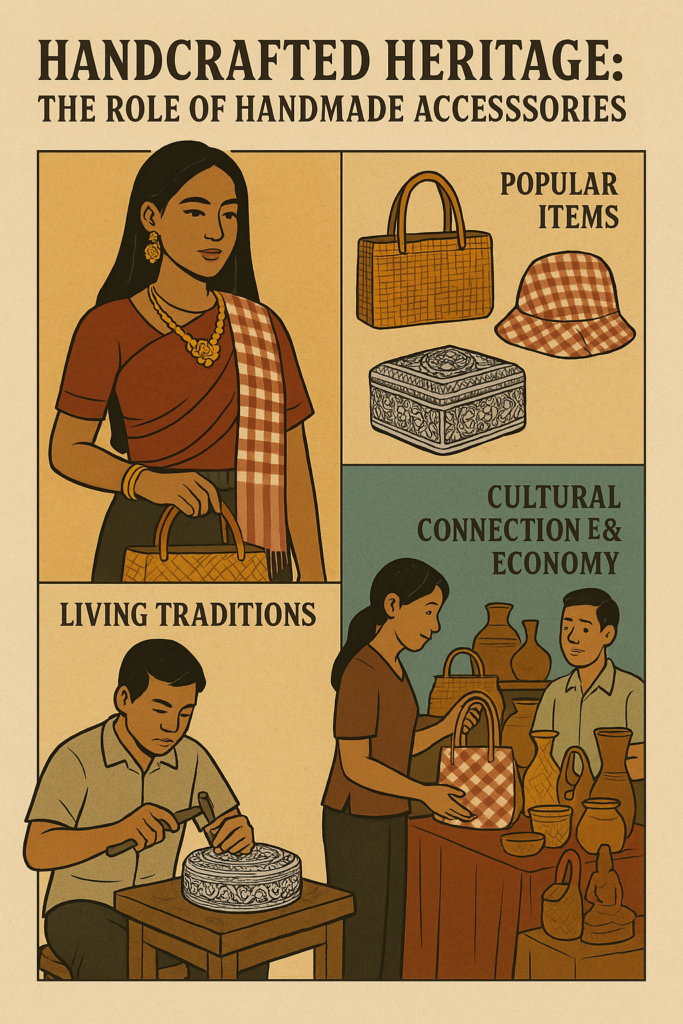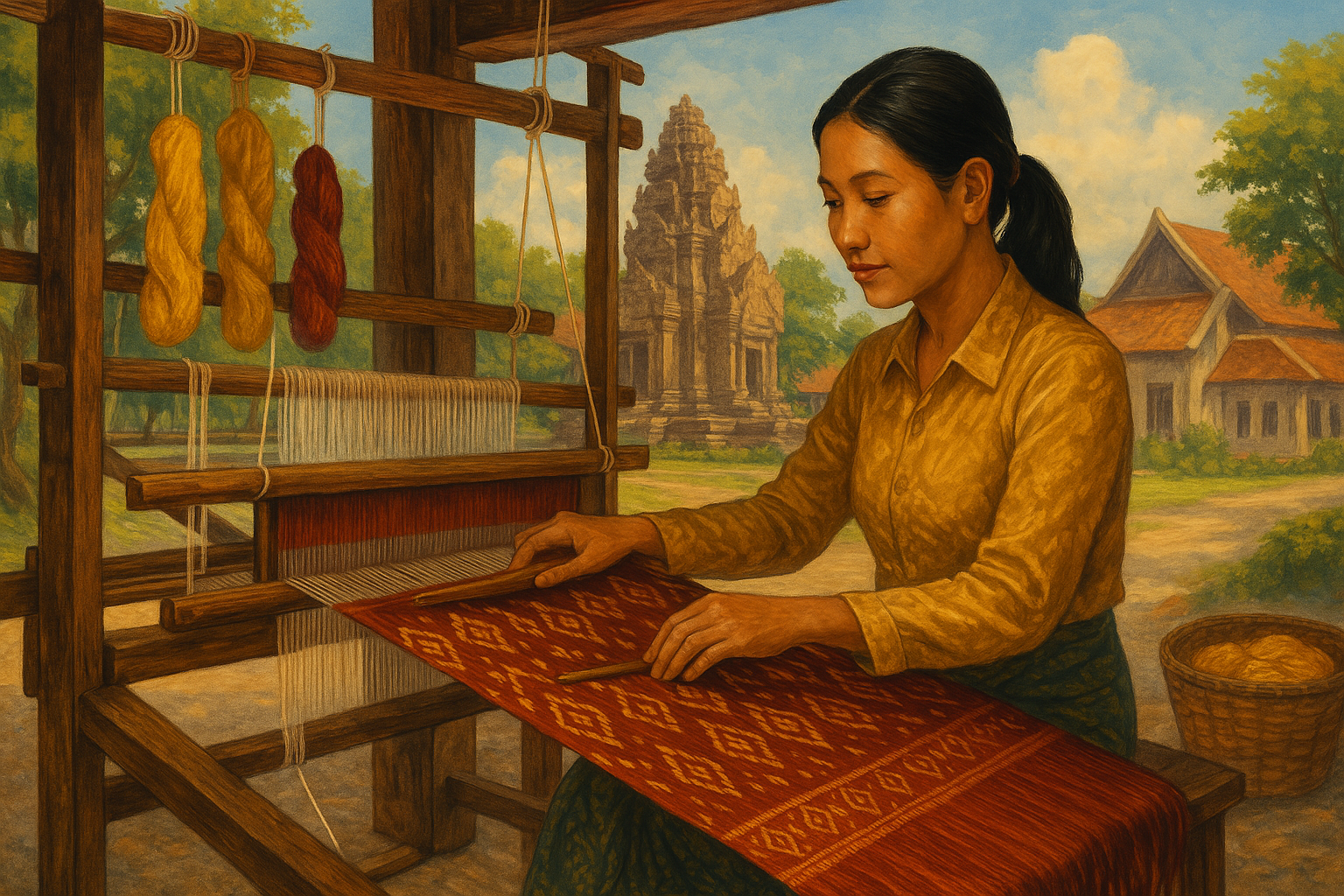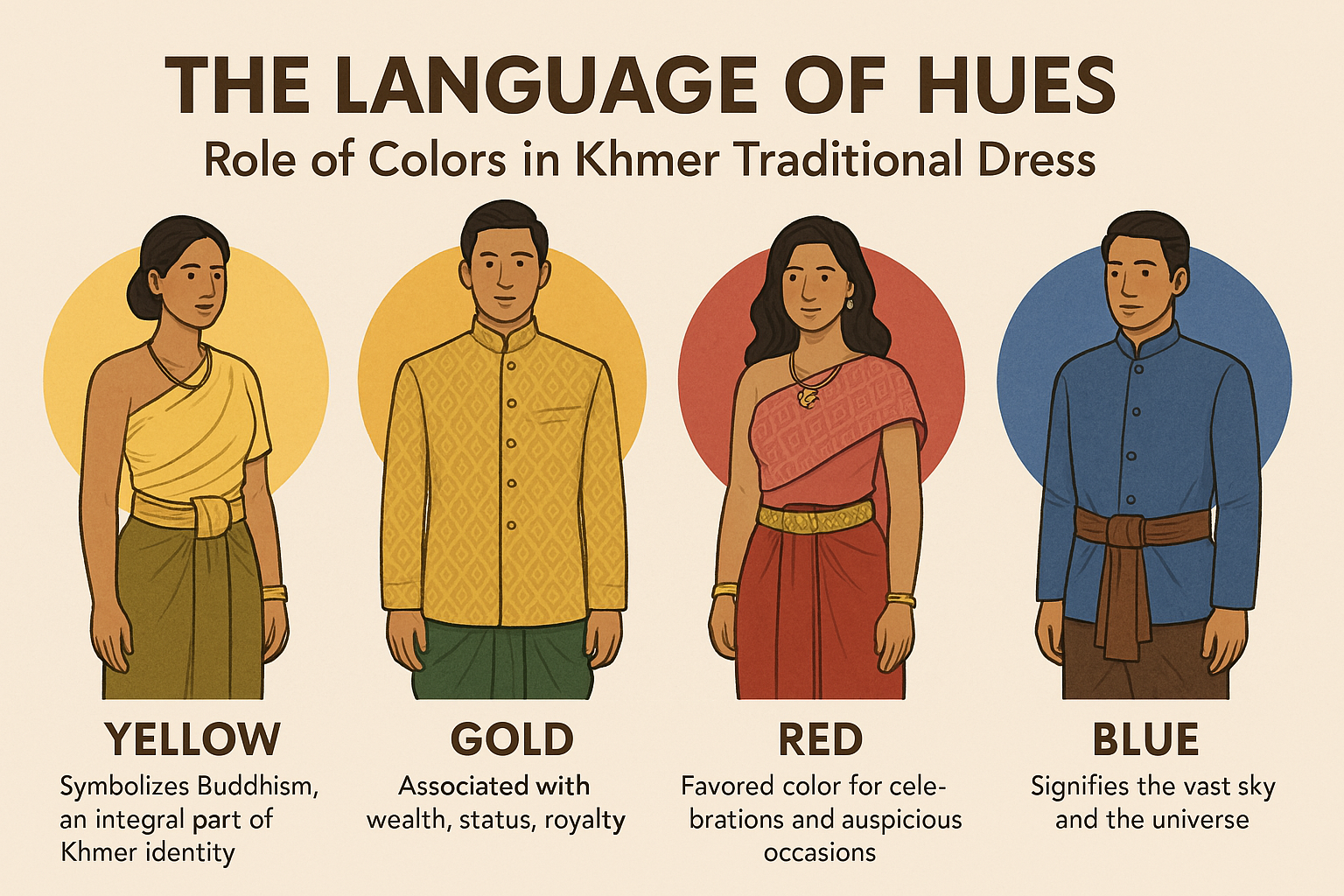While the main garments like the Sampot and Krama form the foundation of traditional Khmer dress, footwear and accessories provide crucial finishing touches, adding layers of meaning, status, and ornate beauty. Historically, footwear was often simple or absent, but accessories, especially those linked to royalty, ceremony, and classical dance, were elaborate and highly significant. Today, while footwear has largely modernized, traditional accessories remain potent symbols of Cambodian cultural heritage, visible in ceremonies and markets from Phnom Penh to provinces like Battambang.
Steps Through History: Traditional Khmer Footwear

Evidence from ancient temple carvings, such as those at Angkor Wat, suggests that going barefoot was common practice for many Cambodians historically, including dancers and ordinary people engaged in daily activities. When footwear was worn, it likely consisted of simple, practical forms suited to the climate and terrain:
- Woven Sandals: Basic sandals crafted from readily available natural materials like dried palm leaves, rattan, or other plant fibers were likely used for protection.
- Simple Slippers: Basic leather or hide slippers might also have been used by some. Specific, elaborate forms of traditional footwear are not prominent features in historical depictions or contemporary traditional dress compared to the richness of clothing and other accessories. The focus was often on adorning the body rather than the feet.
Crowning Glory: Royal Headdresses and Jewelry

In stark contrast to the simplicity of historical footwear, accessories for royalty, deities (as depicted in art and dance), and major ceremonies were, and remain, incredibly elaborate:
- Headdresses (ម្កុដ – Mokot): The most iconic is the tall, ornate, spire-like crown known as the mokot. Often gilded and adorned with intricate details and sometimes gems, the mokot symbolizes royalty, divinity, and echoes the form of Mount Meru, the mythical center of the universe in Hindu-Buddhist cosmology. These are worn by Cambodian monarchs during coronations, by classical dancers portraying divine beings or royalty, and traditionally by brides and grooms during wedding ceremonies to elevate their status for the auspicious occasion.
- Jewelry: As mentioned previously, extensive use of gold or gold-toned jewelry is characteristic of formal Khmer attire. This includes large, ornate necklaces covering the collarbone, dangling earrings, multiple bracelets worn on wrists and upper arms (armlets), anklets, rings, and sometimes decorative body chains or chest pieces (krud or sangvar). This abundance of jewelry signifies wealth, social status, divine blessings, protection, and enhances the wearer’s beauty and ceremonial importance. Traditional Khmer motifs are often incorporated into the designs.
Binding Elements: Belts and Sashes

Belts and sashes add further definition and decoration to traditional outfits:
- Belts (ក្រវាត់ – Kravat): Ornate metal belts, typically gold-toned or silver, are frequently worn with formal Sampots by both men and women, especially during weddings and dance performances. These belts are often wide and feature intricate repoussé work, filigree, inlaid stones, or detailed buckle designs, serving both to secure the garment and as a significant status symbol and decorative element.
- Sashes (កង្សា – Kangsā and other terms): Fabric sashes might also be part of traditional attire. These could be worn diagonally across the torso or tied around the waist, sometimes indicating rank in historical military or official uniforms, adding a layer of color, or forming part of specific dance costumes.
From Barefoot to Modern Steps: Footwear Evolution

Footwear in Cambodia has undergone a dramatic transformation:
- Traditional Context: Primarily barefoot or simple, natural-fiber sandals for basic needs.
- Contemporary Reality (2025): The overwhelming majority of Cambodians wear modern footwear for daily life. Inexpensive plastic or rubber flip-flops (skor chheung kdao or similar terms) are ubiquitous for casual wear due to their practicality and affordability. For work, school, or more formal occasions, global styles like sneakers, sandals, loafers, dress shoes (for men), and fashion sandals or heels (for women) are commonly worn. Even when dressed in elaborate traditional Sampots for weddings or ceremonies today, Cambodians typically pair the outfit with modern formal footwear suitable for the occasion (e.g., elegant sandals, heels, dress shoes). Going barefoot might still occur only in specific ritual contexts, like entering the main hall of a pagoda.
Handcrafted Heritage: The Role of Handmade Accessories

Despite the modernization of footwear, handmade accessories continue to play a vital role in Cambodian fashion and cultural expression:
- Living Traditions: Skills like silversmithing, goldsmithing (often working with gold-plating now), silk weaving, and crafting items from natural fibers (like rattan, bamboo, water hyacinth, palm leaf) persist.
- Popular Items: Markets across Cambodia, including Battambang’s Phsar Nath, offer a variety of handmade accessories. These include intricate silver boxes and jewelry, woven baskets and bags, Krama scarves and items made from Krama fabric (bags, hats, pouches), silk accessories, wood carvings, and stone crafts.
- Cultural Connection & Economy: These items provide a tangible link to Cambodian artistry and heritage. They are popular purchases for both locals and tourists seeking authentic crafts. Importantly, their creation supports local artisans and communities, with many NGOs and social enterprises working to promote fair trade practices and preserve these valuable skills. These accessories allow individuals to incorporate a touch of Khmer tradition into both traditional and modern outfits.
Conclusion
While traditional Cambodian footwear was often characterized by simplicity or its absence, traditional Khmer accessories – especially the magnificent headdresses, jewelry, and belts associated with royalty, dance, and ceremony – remain potent symbols of cultural identity, social status, and spiritual belief. The contrast between the evolution towards ubiquitous modern footwear and the enduring value placed on intricate, handmade traditional accessories highlights Cambodia’s dynamic cultural landscape as of 2025. These accessories, connecting wearers to a rich artistic past, continue to be crafted, worn, and cherished throughout the country, including in vibrant cultural centers like Battambang. Sources and related content





